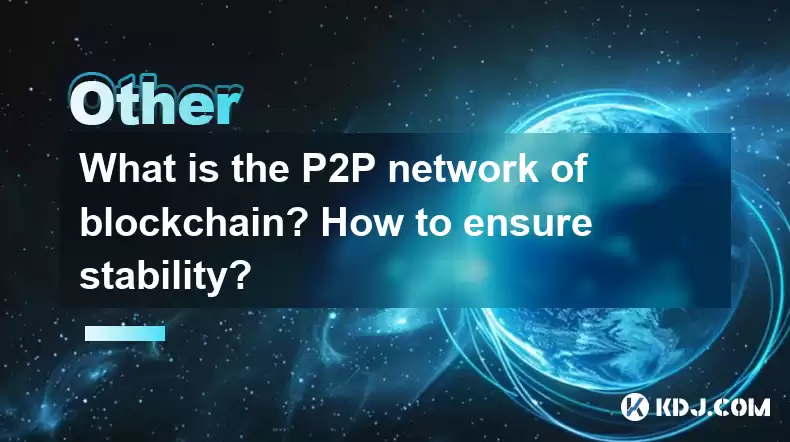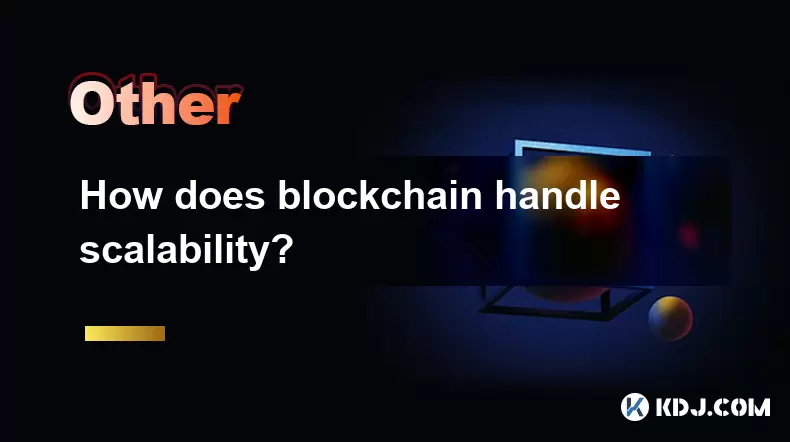-
 Bitcoin
Bitcoin $112400
-1.07% -
 Ethereum
Ethereum $3409
-3.27% -
 XRP
XRP $2.784
-6.60% -
 Tether USDt
Tether USDt $0.9997
-0.03% -
 BNB
BNB $739.3
-2.09% -
 Solana
Solana $158.0
-2.90% -
 USDC
USDC $0.9998
-0.02% -
 TRON
TRON $0.3213
-0.94% -
 Dogecoin
Dogecoin $0.1929
-5.01% -
 Cardano
Cardano $0.6974
-2.82% -
 Hyperliquid
Hyperliquid $36.69
-2.31% -
 Sui
Sui $3.327
-4.80% -
 Stellar
Stellar $0.3672
-5.18% -
 Chainlink
Chainlink $15.65
-3.07% -
 Bitcoin Cash
Bitcoin Cash $525.0
-1.68% -
 Hedera
Hedera $0.2291
-6.00% -
 Avalanche
Avalanche $20.91
-2.96% -
 Ethena USDe
Ethena USDe $1.000
0.00% -
 Toncoin
Toncoin $3.520
-1.12% -
 UNUS SED LEO
UNUS SED LEO $8.968
0.14% -
 Litecoin
Litecoin $105.7
0.26% -
 Shiba Inu
Shiba Inu $0.00001181
-1.79% -
 Polkadot
Polkadot $3.492
-2.08% -
 Uniswap
Uniswap $8.800
-3.10% -
 Dai
Dai $0.9999
-0.01% -
 Monero
Monero $289.9
-3.17% -
 Bitget Token
Bitget Token $4.243
-1.27% -
 Pepe
Pepe $0.00001006
-3.67% -
 Cronos
Cronos $0.1248
-5.68% -
 Aave
Aave $249.7
-2.50%
What is the P2P network of blockchain? How to ensure stability?
The P2P network in blockchain ensures stability through node redundancy, robust consensus mechanisms, and strong community governance, maintaining a decentralized and secure system.
Apr 29, 2025 at 02:00 pm

The P2P network of blockchain refers to a decentralized network architecture where nodes (computers) communicate directly with each other without the need for a central server. This network model underpins the functionality of blockchain technology, enabling the secure and transparent exchange of data. To understand the P2P network of blockchain and how to ensure its stability, let's delve deeper into its components and mechanisms.
Structure of the P2P Network in Blockchain
The structure of a P2P network in blockchain is based on a mesh of interconnected nodes. Each node in the network holds a copy of the entire blockchain or, in some cases, a part of it. This decentralized structure ensures that no single point of failure exists, making the network resilient to attacks and failures.
- Nodes: These are individual devices that participate in the network. They can be full nodes, which store the entire blockchain, or light nodes, which store only the necessary data to verify transactions.
- Connections: Nodes are connected to each other through various protocols, allowing them to share and validate data.
- Consensus Mechanisms: These are the rules that nodes follow to agree on the state of the blockchain, such as Proof of Work (PoW) or Proof of Stake (PoS).
How the P2P Network Functions in Blockchain
The P2P network functions by allowing nodes to broadcast and receive data. When a new transaction is initiated, it is broadcast to the network, where nodes validate it according to the consensus rules. Once validated, the transaction is added to a block, which is then added to the blockchain.
- Transaction Broadcasting: When a user initiates a transaction, it is sent to nearby nodes, which then relay it to other nodes in the network.
- Validation: Each node verifies the transaction against the blockchain's rules. If valid, it is included in a block.
- Block Propagation: Once a block is mined or created, it is broadcast to the network, where nodes verify and add it to their copy of the blockchain.
Ensuring Stability in the P2P Network
Stability in a P2P network is crucial to maintain the integrity and functionality of the blockchain. Several strategies are employed to ensure this stability.
- Node Redundancy: Having a large number of nodes in the network ensures that if some nodes go offline, the network remains operational. More nodes mean more redundancy and greater stability.
- Network Topology: A well-distributed network topology helps in maintaining efficient data propagation. Nodes should be geographically dispersed to prevent regional failures from impacting the entire network.
- Consensus Algorithms: Robust consensus mechanisms like PoW and PoS help in achieving agreement among nodes, preventing forks and ensuring the integrity of the blockchain.
Security Measures for P2P Network Stability
Security is a critical aspect of maintaining the stability of a P2P network. Various security measures are implemented to protect the network from attacks and unauthorized access.
- Encryption: Data transmitted between nodes is encrypted to prevent interception and tampering. Encryption ensures that only authorized nodes can access and validate data.
- Firewalls and Intrusion Detection Systems: These are used to protect nodes from external attacks. Nodes are often configured with firewalls to restrict incoming connections and intrusion detection systems to monitor for suspicious activities.
- Regular Updates and Patches: Keeping the software running on nodes up to date with the latest security patches is essential to protect against known vulnerabilities.
Monitoring and Maintenance of the P2P Network
Continuous monitoring and maintenance are necessary to ensure the long-term stability of the P2P network. This involves tracking the health of nodes, network performance, and addressing issues promptly.
- Node Health Monitoring: Tools and software are used to monitor the status of nodes, ensuring they are online and functioning correctly. Regular checks on node health help in identifying and resolving issues before they impact the network.
- Network Performance Analysis: Analyzing the performance of the network, such as transaction throughput and block propagation times, helps in identifying bottlenecks and areas for improvement.
- Issue Resolution: When issues arise, such as nodes going offline or network congestion, they must be addressed promptly. This may involve troubleshooting, updating software, or adding new nodes to the network.
Role of Community and Governance in Network Stability
The stability of a P2P network is also influenced by the community and governance structures surrounding the blockchain. A strong community can help in maintaining and improving the network.
- Community Engagement: Active participation from the community in reporting issues, suggesting improvements, and contributing to the development of the blockchain helps in maintaining its stability.
- Governance Models: Effective governance models, such as decentralized autonomous organizations (DAOs), can help in making decisions that affect the network's stability. Good governance ensures that changes and updates are implemented smoothly and in the best interest of the network.
- Incentive Structures: Incentives, such as rewards for running nodes or participating in governance, can encourage more individuals to contribute to the network's stability.
Frequently Asked Questions
Q1: How does a P2P network differ from a traditional client-server network in the context of blockchain?
A P2P network in blockchain differs from a traditional client-server network in that it does not rely on a central server to manage and distribute data. Instead, data is distributed across all nodes in the network, making it more resilient and decentralized. In a client-server model, a single point of failure exists, whereas in a P2P network, the failure of a single node does not impact the overall functionality of the network.
Q2: Can the P2P network of a blockchain be compromised, and if so, how can it be protected?
Yes, the P2P network of a blockchain can be compromised through various attacks, such as 51% attacks, where an attacker gains control of the majority of the network's mining power. To protect against such attacks, measures like implementing strong consensus mechanisms, ensuring a diverse and large number of nodes, and using advanced security protocols are crucial.
Q3: What role do miners play in the stability of a P2P network in blockchain?
Miners play a crucial role in maintaining the stability of a P2P network in blockchain. They validate transactions and create new blocks, ensuring the integrity of the blockchain. By participating in the consensus mechanism, miners help in preventing malicious activities and maintaining the decentralized nature of the network.
Q4: How does the scalability of a P2P network impact its stability in blockchain?
The scalability of a P2P network can impact its stability in blockchain. As the network grows, ensuring efficient data propagation and maintaining consensus becomes more challenging. Solutions like sharding, layer-2 scaling, and improving network protocols are used to enhance scalability while maintaining stability.
Disclaimer:info@kdj.com
The information provided is not trading advice. kdj.com does not assume any responsibility for any investments made based on the information provided in this article. Cryptocurrencies are highly volatile and it is highly recommended that you invest with caution after thorough research!
If you believe that the content used on this website infringes your copyright, please contact us immediately (info@kdj.com) and we will delete it promptly.
- Ruvi AI: The Millionaire Maker with a Price Spike on the Horizon?
- 2025-08-03 02:50:12
- DOGE, Utility Coins, and Smart Money: A New Era for Crypto Investing?
- 2025-08-03 02:50:12
- Punisher Coin: Is This Meme Coin the Crypto Investment with 100x ROI Potential?
- 2025-08-03 03:30:12
- Ruvi AI, XRP, and CoinMarketCap: Decoding the Crypto Buzz
- 2025-08-03 03:30:12
- Solana, WeWake, and Presales: What's Hot in the Crypto Space?
- 2025-08-03 03:35:25
- MoonBull, LOFI Pepe: Navigating the Meme Coin Mania and the Best Crypto Whitelist
- 2025-08-03 04:10:12
Related knowledge

What is the difference between on-chain and off-chain transactions?
Aug 02,2025 at 04:22pm
Understanding On-Chain TransactionsOn-chain transactions refer to digital asset transfers that are recorded directly on a blockchain ledger. These tra...

What is the double-spending problem and how does blockchain prevent it?
Aug 02,2025 at 01:07pm
Understanding the Double-Spending ProblemThe double-spending problem is a fundamental challenge in digital currency systems where the same digital tok...

What is the difference between a blockchain and a database?
Aug 01,2025 at 09:36pm
Understanding the Core Structure of a BlockchainA blockchain is a decentralized digital ledger that records data in a series of immutable blocks linke...

How does blockchain handle scalability?
Aug 02,2025 at 02:58pm
Understanding Blockchain Scalability ChallengesBlockchain scalability refers to a network's ability to handle an increasing volume of transactions wit...

What are the different types of blockchains?
Aug 03,2025 at 03:01am
Public Blockchains: Open and Decentralized NetworksPublic blockchains are the most widely recognized type of blockchain, characterized by their open a...

What is a hash in a blockchain?
Aug 02,2025 at 05:28am
Understanding the Concept of Hash in BlockchainA hash in the context of blockchain technology refers to a unique digital fingerprint generated by a cr...

What is the difference between on-chain and off-chain transactions?
Aug 02,2025 at 04:22pm
Understanding On-Chain TransactionsOn-chain transactions refer to digital asset transfers that are recorded directly on a blockchain ledger. These tra...

What is the double-spending problem and how does blockchain prevent it?
Aug 02,2025 at 01:07pm
Understanding the Double-Spending ProblemThe double-spending problem is a fundamental challenge in digital currency systems where the same digital tok...

What is the difference between a blockchain and a database?
Aug 01,2025 at 09:36pm
Understanding the Core Structure of a BlockchainA blockchain is a decentralized digital ledger that records data in a series of immutable blocks linke...

How does blockchain handle scalability?
Aug 02,2025 at 02:58pm
Understanding Blockchain Scalability ChallengesBlockchain scalability refers to a network's ability to handle an increasing volume of transactions wit...

What are the different types of blockchains?
Aug 03,2025 at 03:01am
Public Blockchains: Open and Decentralized NetworksPublic blockchains are the most widely recognized type of blockchain, characterized by their open a...

What is a hash in a blockchain?
Aug 02,2025 at 05:28am
Understanding the Concept of Hash in BlockchainA hash in the context of blockchain technology refers to a unique digital fingerprint generated by a cr...
See all articles

























































































